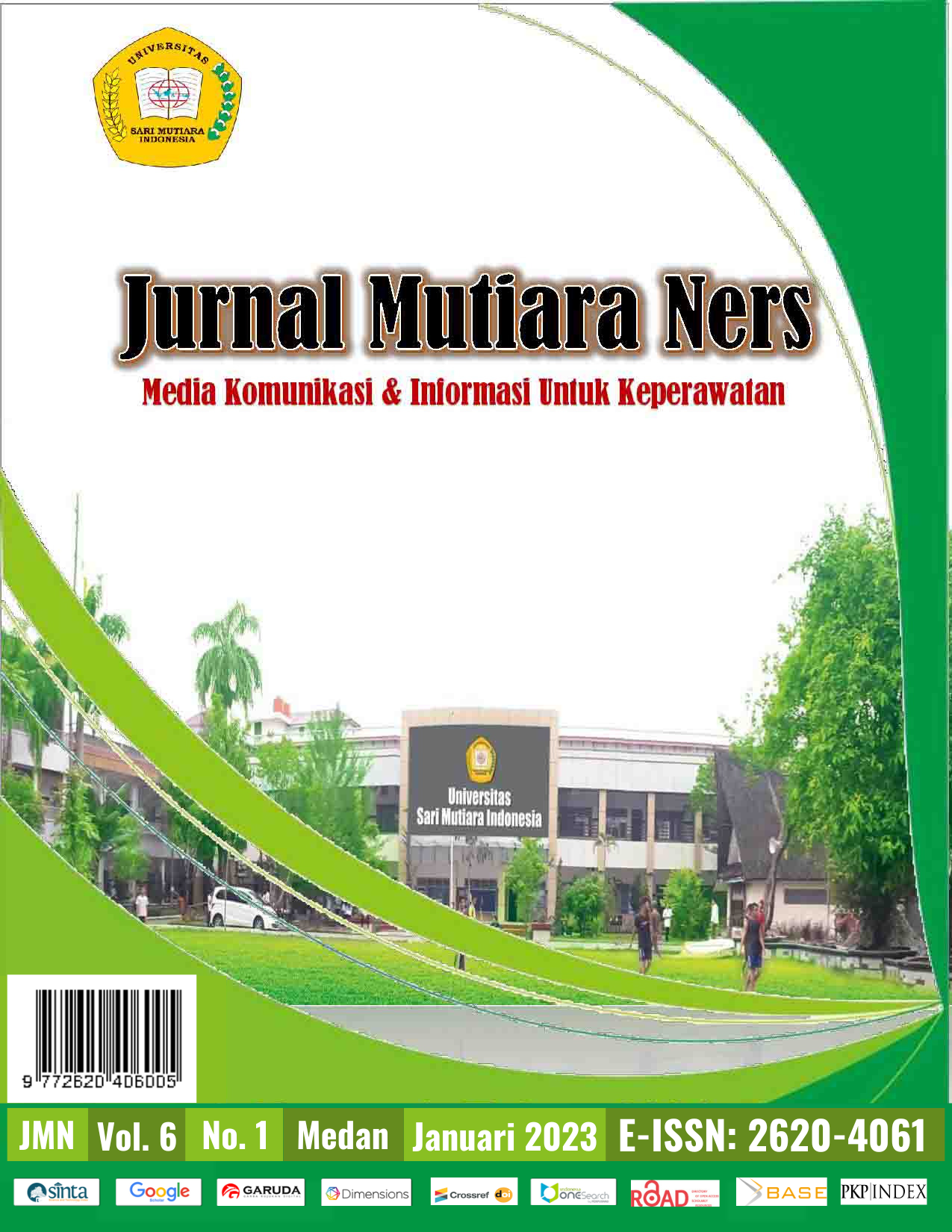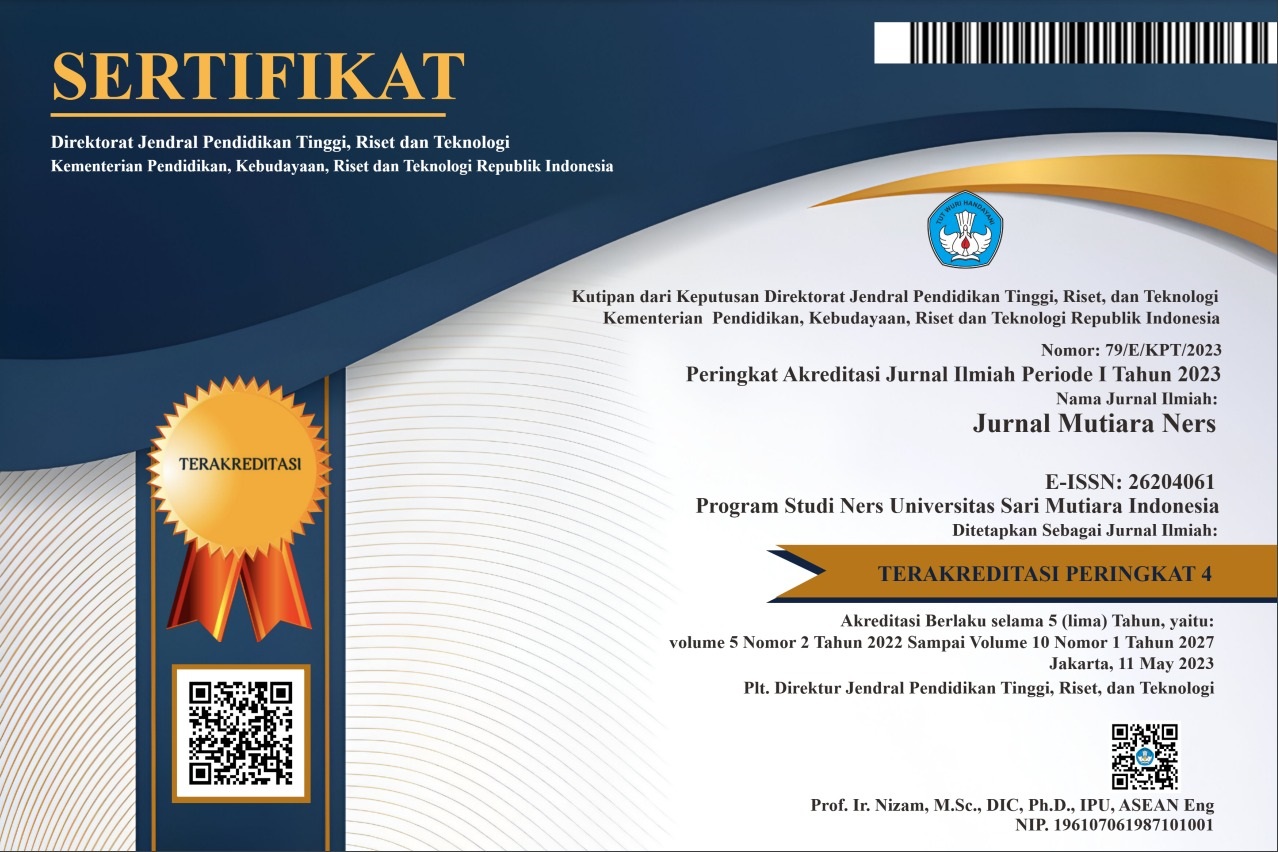FACTORS AFFECTING VISUAL ACUITY IN ADOLESCENT GADGET USERS
Keywords:
gadgets, type, length of use, position, visual acuityAbstract
The eye is one of the senses that is very important for humans to absorb visual information. Incorrect use of gadgets, such as excessive frequency of gadget use, improper positioning, and poor lighting intensity, will have an impact on reducing visual acuity. The purpose of this study is to determine the factors that influence the occurrence of decreased visual acuity in adolescents using gadgets at SMP Negeri 2 Makassar. This study is an analytical observational study with a cross-sectional approach conducted at SMP Negeri 2 Makassar on August 22–24, 2022. The total population of seventh grade students at SMP Negeri 2 Makassar was 216. Sampling was done in this study using the random simple sampling technique, with the number of samples that meet the inclusion criteria reaching as many as 77 students. Gender obtained a p value of 0.059, the use of glasses obtained a p value of 0.334, and the type of gadget obtained a p value of 1,000. The length of playing gadgets obtained a p value of 0.000, and the position of playing gadgets had a p value of 0.415. It can be concluded that the length of use of gadgets is a factor that affects the decline in visual acuity. From the results of research on factors affecting visual acuity in adolescent gadget users at SMP Negeri 2 Makassar in 2022, it can be concluded that there is no relationship between age, gender, use of glasses, type of gadget, and position of playing gadgets with decreased visual acuity, and there is a relationship between the duration of playing gadgets > 4 hours with decreased visual acuity (p 0.000) in adolescent age children at SMP Negeri 2 Makassar. to the school to conduct routine sharp vision checks at school in collaboration with the local health center.
Downloads
References
Terjadi Miopia Pada Siswa Di SMA Negeri 3 Banda Aceh. Jurnal Ilmiah Mahasiswa Fakultas Keperawatan2, 2(3), 1–10. https://jim.usk.ac.id/FKep/article/view/3906
Citrawati, M., Aprilia, C. A., & Hadiwiardjo, Y. H. (2020). Faktor-Faktor Yang Berhubungan Dengan Ketajaman Penglihatan Pada Pelajar Sekolah Dasar Negeri 07 Pondok Labu Jakarta Selatan. Jambi Medical Journal, 8(2), 111–119. https://doi.org/https://doi.org/10.22437/jmj.v8i2.4124
Ernawati, W., Budiharto, I., & Winarianti. (2015). Pengaruh Penggunaan Gadget Terhadap Penurunan Tajam Penglihatan Pada Anak Usia Sekolah (6-12 TAHUN) di SD Muhammadiyah 2 Pontianak Selatan. ProNers, 3(1), 1–5. https://doi.org/http://dx.doi.org/10.26418/jpn.v3i1.10533
Hidayani, N. P., Tat, F., & Djogo, H. M. A. (2020). Hubungan Antara Lama Penggunaan, Jarak Pandang Dan Posisi Tubuh Saat Menggunakan Gagdet Dengan Ketajaman Penglihatan Pada Anak Kelas 5 Dan 6 Di Sdk Citra Bangsa Kupang. CHM-K Applied Scientifics Journal, 3(1), 27–34. https://media.neliti.com/media/publications/316428-hubungan-antara-lama-penggunaan-jarak-pa-03d2d87d.pdf
Jayanti, P. S. R., Ani, L. S., & Sari, K. A. K. (2020). Kejadian Penurunan Tajam Penglihatan Pada Pelajar Sekolah Menengah Pertama Di Wilayah Kerja Puskesmas Iv Denpasar Selatan. Jurnal Medika Udayana, 9(2), 74–79. https://doi.org/https://doi.org/10.24843/10.24843.MU.2020.V09.i2.P13
Juneti, Bebasari, E., & Nukman, E. (2015). Gambaran Faktor-Faktor Yang Mempengaruhi Gangguan Tajam Penglihatan Pada Anak Sekolah Dasar Kelas V Dan Kelas VI DI SDN 017 Bukit Raya Pekanbaru Tahun 2014. JOM FK, 2(2), 1–10. https://jom.unri.ac.id/index.php/JOMFDOK/article/viewFile/4806/4689
Navarona, A. N. I., & Mahawati, E. (2016). Hubungan Antara Praktek Unsafe Action dalam Penggunaan Gadget dengan Keluhan Subyektif Gangguan Kesehatan Mata Pada Murid Sekolah Dasar Islam Tunas Harapan Tahun 2016. Skripsi, 1–15. https://juke.kedokteran.unila.ac.id/index.php/majority/article/view/2308
Porotu, L. I., Joseph, W. B. S., & Sondakh, R. C. (2015). Faktor-faktor yang Berhubungan dengan Ketajaman Penglihatan pada Pelajar Sekolah Dasar Katolik Santa Theresia 02 Kota Manado. E-Journal Universitas Sam Ratulangi, 4(1), 31–39. http://ejournal.unsrat.ac.id/index.php/kesmas/article/download/7237/6739
Ramamurthy, D., Lin Chua, S. Y., & Saw, S. M. (2015). A review of environmental risk factors for myopia during early life, childhood and adolescence. Clinical and Experimental Optometry, 98(6), 497–506. https://doi.org/10.1111/cxo.12346
Rudhiati, F., Apriany, D., & Hardianti, N. (2015). Hubungan Durasi Bermain Video Game Dengan Ketajaman Penglihatan Anak Usia Sekolah. Jurnal Skolastik Keperawatan, 1(2), 12–17. https://doi.org/10.35974/jsk.v1i2.83
Usman, S., Nukman, E., & Bebasari, E. (2014). Hubungan Antara Faktor Keturunan, Aktivitas Melihat Dekat Dan Sikap Pencegahan Mahasiswa Fakultas Kedokteran Universitas Riau Terhadap Kejadian Miopia. JOM FK, 1(2), 1–13. https://jom.unri.ac.id/index.php/JOMFDOK/article/view/3161
Usha, S., Karavadi, V. S. S., & Damayanthi, M. N. (2018). Factors Associated with Refractive Errors among School Children in Rural Field Practice Area of a Tertiary Care Hospital , Bangalore. 9(11), 824–829.
You, Q. S., Wu, L. J., Duan, J. L., Luo, Y. X., Liu, L. J., Li, X., Gao, Q., Wang, W., Xu, L., Jonas, J. B., & Guo, X. H. (2012). Factors associated with myopia in school children in China: the Beijing childhood eye study. PloS one, 7(12), e52668. https://doi.org/10.1371/journal.pone.0052668
Published
How to Cite
Issue
Section
Copyright (c) 2023 Mikawati Mikawati, Lisnawati Lisnawati, Suriyani Suriyani, Nofianti Nofianti, Sari Narulita

This work is licensed under a Creative Commons Attribution-ShareAlike 4.0 International License.


.png)





